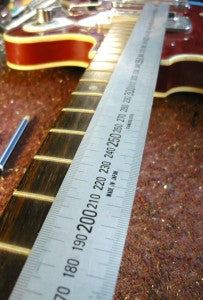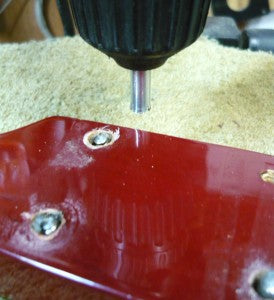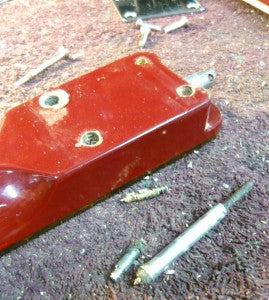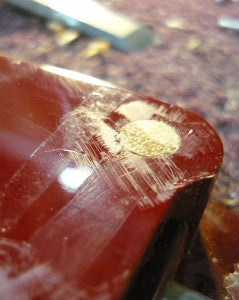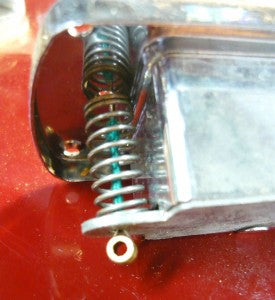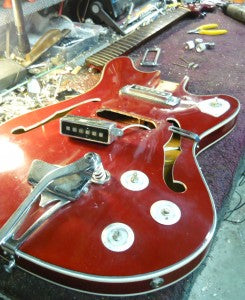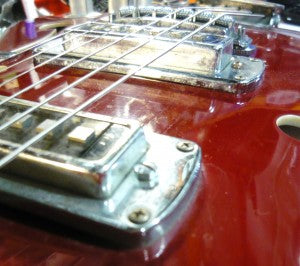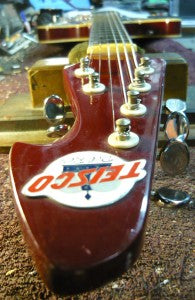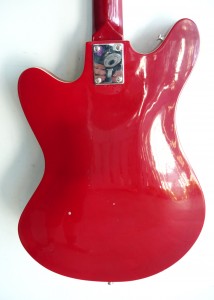Teisco Del Rey EP-10T
Share
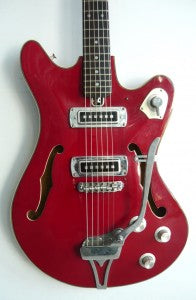
I do have a real soft spot for these old Teiscos and Guyatones. For years they were written off as "cheap and nasty" Asian imports trying to compete with the big US brands. In some cases they far surpassed their bigger brothers, certainly in terms of innovation and design. These brands quickly got to the point of design for aesthetics rather than just conforming.
So this one came in completely unplayable but the owner knew he had a good guitar and wanted it playable. That, and it looks so damn cool.
The slightly offset body shape is reminiscent of the Jag and Jazzmaster but as with lots of these Japanese beauties,just a little skewed. The hollow body and F holes really set this shape off nicely and the archtop, when it catches the light really shows off the beauty well.
Then there's that GREAT 4/2 headstock.
This guitar had some real issues, some obvious, some not. For starters the neck angle was all wrong. The bridge had been stripped and the base plate and adjustments were all gone in a futile effort to get the action down lower. This was not enough to get the action down low enough to play and there was nothing to anchor the bridge in place.
So it was time to sort out a new bridge anchoring and adjustment system. I wanted to use the old original bridge if possible so I used some Tune-o-matic style adjusters and fitted them to the body in the correct place for alignment and intonation.
With the bridge marked and ready to fit the plugs it was time to take off the neck and get the angle sorted for the new bridge height. Oh boy !!!
I've seen this happen when the screws get old and rusty when the guitar has been in very humid conditions for years and I've seen this happen before.
The neck screws were glued in in an attempt to stop the neck from moving around. I've also seen these type of guitars with the whole neck glued in including the screws. None of these methods work as well as a proper repair and this job just got more time consuming.
I got the broken screws out with some scrap tubing I keep just for this occasion and after being removed (along with the glue) the holes are drilled and doweled like a normal "plug job".
This involves drilling the holes to a standard hardwood dowel size and gluing the dowel into the holes and drilling the new screw holes into these hardwood plugs.
Once done properly, this is as strong as the original joint and is a good fix for worn out screw holes (NOT toothpicks)
With the new fresh holes drilled I made a hardwood wedge for the neck pocket to get our angle on the neck we needed to clear the bridge height and we're back in business.
The pickups needed some work too but everything pretty much worked so it was a matter of cleaning everything out and fixing some mounting issues on the pick ups. Being a hollow body where you need to do all your work through the F holes, the less work needed here the better.
With everything back together it was a straight forward set up from here. With the new neck angle I had plenty of angle on the bridge and still plenty of adjustment in the pick up heights.
Everything was good and it plays like a ......... Teisco. Back home you go.







